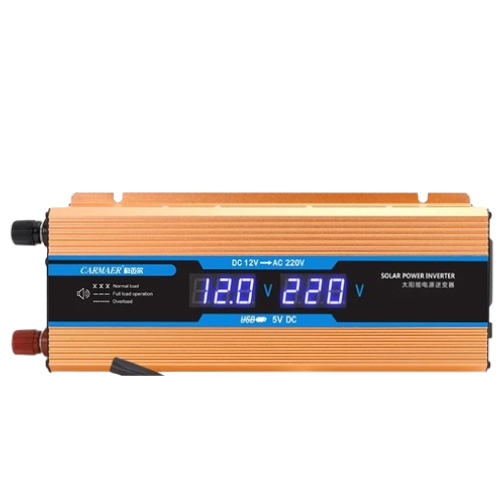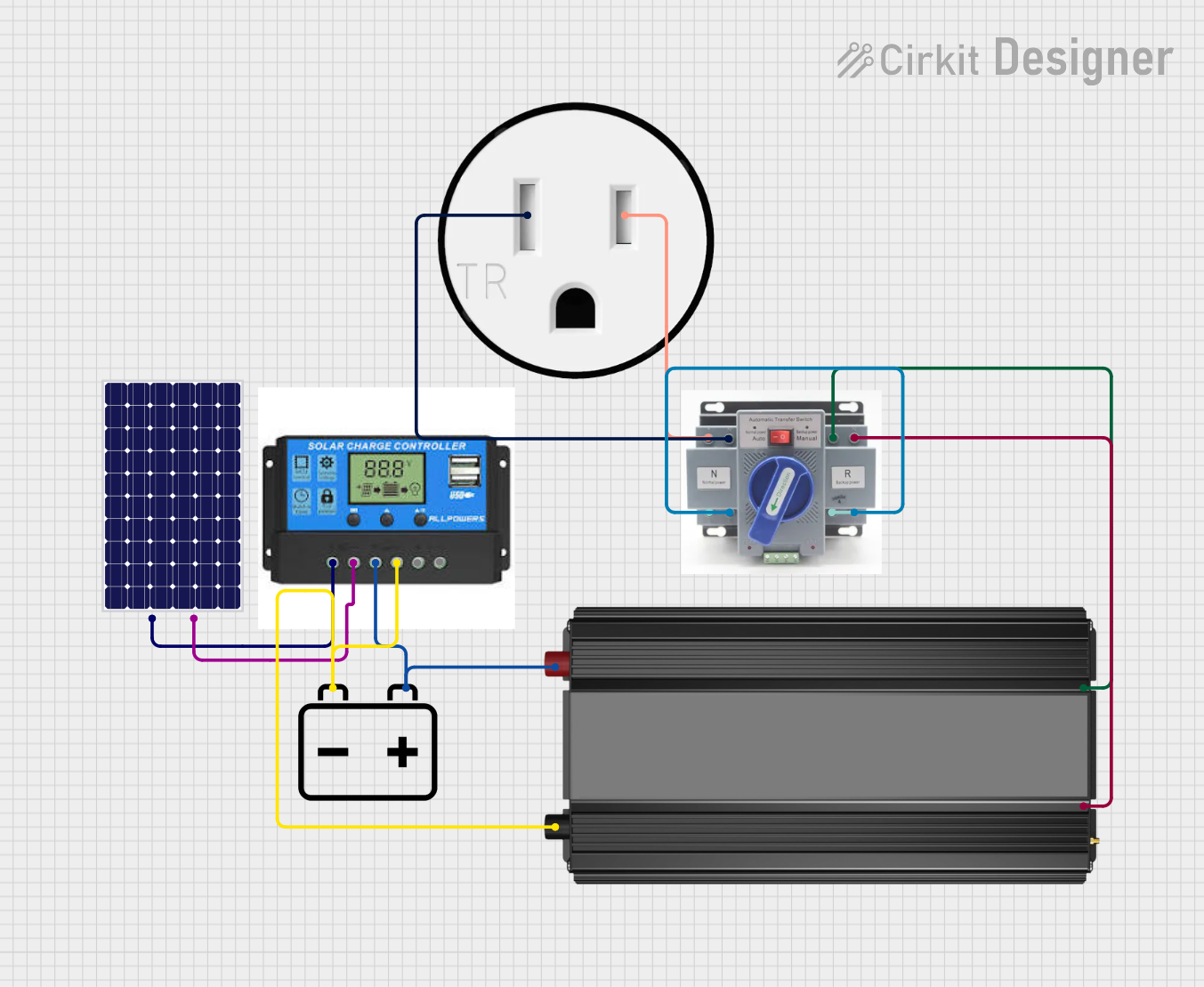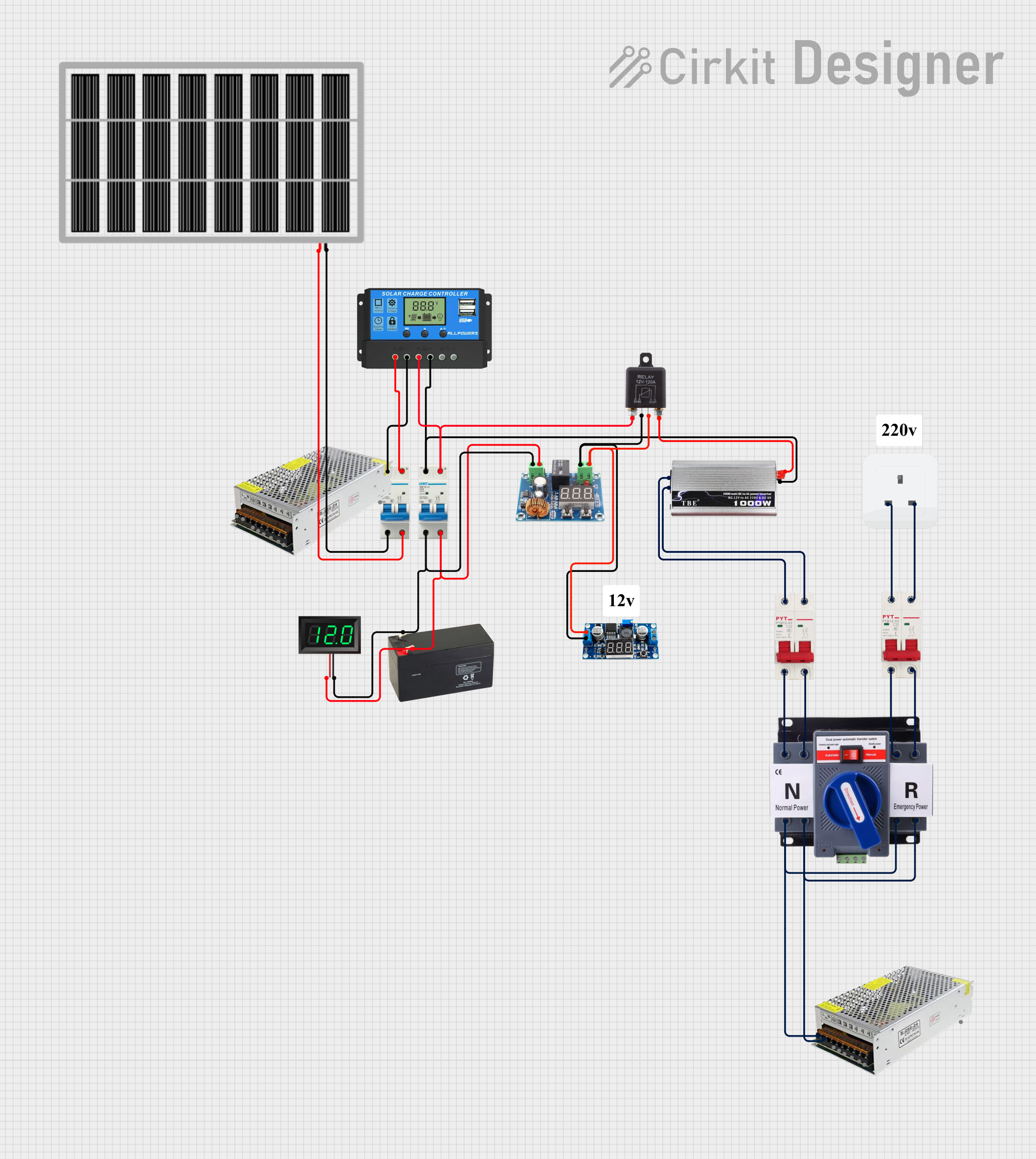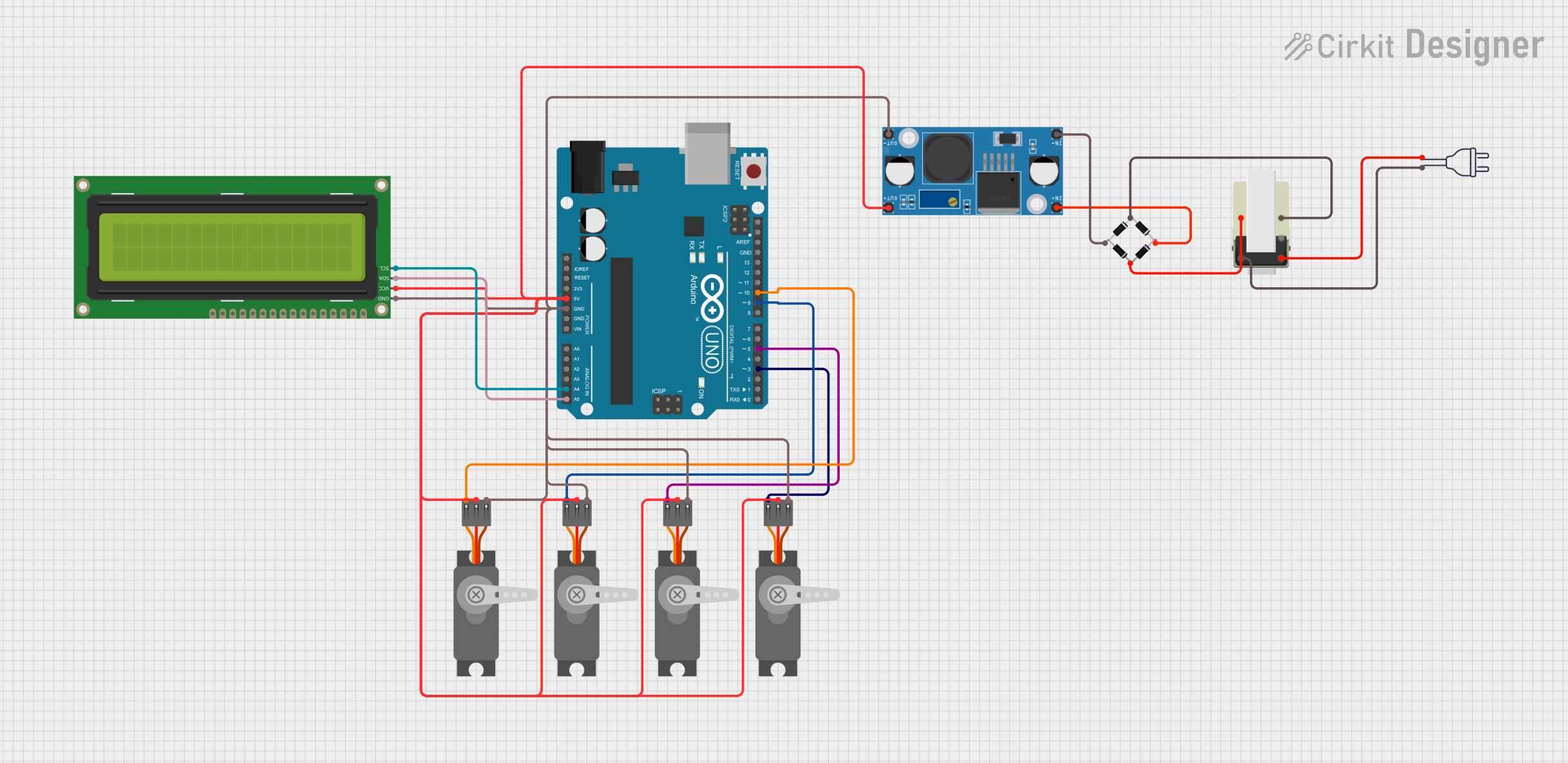
How to Use DC to AC Inverter: Examples, Pinouts, and Specs

 Design with DC to AC Inverter in Cirkit Designer
Design with DC to AC Inverter in Cirkit DesignerIntroduction
A DC to AC inverter is an electronic device that converts direct current (DC) from sources such as batteries, solar panels, or fuel cells into alternating current (AC). This conversion allows DC power sources to operate AC-powered devices, such as household appliances, power tools, and lighting systems. Inverters are essential in renewable energy systems, uninterruptible power supplies (UPS), and portable power solutions.
Explore Projects Built with DC to AC Inverter

 Open Project in Cirkit Designer
Open Project in Cirkit Designer
 Open Project in Cirkit Designer
Open Project in Cirkit Designer
 Open Project in Cirkit Designer
Open Project in Cirkit Designer
 Open Project in Cirkit Designer
Open Project in Cirkit DesignerExplore Projects Built with DC to AC Inverter

 Open Project in Cirkit Designer
Open Project in Cirkit Designer
 Open Project in Cirkit Designer
Open Project in Cirkit Designer
 Open Project in Cirkit Designer
Open Project in Cirkit Designer
 Open Project in Cirkit Designer
Open Project in Cirkit DesignerCommon Applications and Use Cases
- Renewable Energy Systems: Converts DC from solar panels or wind turbines to AC for home or grid use.
- Uninterruptible Power Supplies (UPS): Provides backup AC power during outages.
- Portable Power Solutions: Powers AC devices using batteries in off-grid or mobile scenarios.
- Electric Vehicles (EVs): Supplies AC power for onboard systems or external devices.
- Industrial Applications: Drives AC motors and equipment from DC power sources.
Technical Specifications
Below are the general technical specifications for a typical DC to AC inverter. Note that specific models may vary, so always refer to the manufacturer's datasheet for precise details.
Key Technical Details
- Input Voltage: 12V DC, 24V DC, or 48V DC (common ranges)
- Output Voltage: 110V AC or 220V AC (depending on region)
- Output Frequency: 50Hz or 60Hz
- Output Waveform: Pure sine wave, modified sine wave, or square wave
- Power Rating: 100W to several kilowatts (varies by model)
- Efficiency: Typically 85% to 95%
- Protection Features: Overload, short circuit, over-temperature, and low battery protection
Pin Configuration and Descriptions
The pin configuration for a DC to AC inverter depends on the specific model. Below is a general example for a basic inverter with input and output terminals:
| Pin/Terminal | Description |
|---|---|
| DC+ | Positive DC input terminal (connect to the positive terminal of the DC source). |
| DC- | Negative DC input terminal (connect to the negative terminal of the DC source). |
| AC-L | Live AC output terminal (provides the AC live line). |
| AC-N | Neutral AC output terminal (provides the AC neutral line). |
| Ground (GND) | Ground terminal for safety and proper operation. |
Usage Instructions
How to Use the Component in a Circuit
- Connect the DC Input:
- Ensure the DC source voltage matches the inverter's input voltage rating (e.g., 12V, 24V).
- Connect the positive terminal of the DC source to the
DC+pin and the negative terminal to theDC-pin.
- Connect the AC Output:
- Connect the AC load (e.g., an appliance) to the
AC-LandAC-Nterminals. - Ensure the load's power rating does not exceed the inverter's maximum output power.
- Connect the AC load (e.g., an appliance) to the
- Grounding:
- Connect the
Ground (GND)terminal to an appropriate earth ground for safety.
- Connect the
- Power On:
- Turn on the inverter using its power switch (if available).
- Verify that the AC output voltage and frequency match the load's requirements.
Important Considerations and Best Practices
- Match Voltage Ratings: Always ensure the DC input voltage matches the inverter's specifications.
- Avoid Overloading: Do not connect loads that exceed the inverter's power rating.
- Use Proper Wiring: Use appropriately rated wires for both DC input and AC output connections.
- Cooling and Ventilation: Place the inverter in a well-ventilated area to prevent overheating.
- Battery Protection: Use a fuse or circuit breaker between the battery and inverter to protect against overcurrent.
- Waveform Compatibility: For sensitive electronics, use a pure sine wave inverter to avoid potential damage.
Example: Connecting to an Arduino UNO
While DC to AC inverters are not directly controlled by microcontrollers like the Arduino UNO, you can use an Arduino to monitor or control the inverter indirectly (e.g., turning it on/off via a relay). Below is an example of using an Arduino to control an inverter via a relay module:
// Example: Arduino controlling a DC to AC inverter via a relay module
// Connect the relay module's control pin to Arduino pin 7
// Ensure the relay is rated for the inverter's input current
const int relayPin = 7; // Pin connected to the relay module
void setup() {
pinMode(relayPin, OUTPUT); // Set relay pin as output
digitalWrite(relayPin, LOW); // Ensure relay is off initially
}
void loop() {
// Example: Turn the inverter on for 10 seconds, then off for 10 seconds
digitalWrite(relayPin, HIGH); // Turn on the relay (inverter ON)
delay(10000); // Wait for 10 seconds
digitalWrite(relayPin, LOW); // Turn off the relay (inverter OFF)
delay(10000); // Wait for 10 seconds
}
Troubleshooting and FAQs
Common Issues and Solutions
Inverter Does Not Turn On:
- Cause: Insufficient DC input voltage or loose connections.
- Solution: Check the DC source voltage and ensure all connections are secure.
No AC Output:
- Cause: Overload or protection mode triggered.
- Solution: Reduce the load and reset the inverter (if applicable).
Overheating:
- Cause: Poor ventilation or excessive load.
- Solution: Ensure proper airflow around the inverter and reduce the load.
Appliance Not Working Properly:
- Cause: Incompatible waveform (e.g., modified sine wave instead of pure sine wave).
- Solution: Use a pure sine wave inverter for sensitive devices.
FAQs
Q: Can I use a DC to AC inverter with a car battery?
- A: Yes, as long as the inverter's input voltage matches the car battery voltage (e.g., 12V) and the load does not exceed the inverter's power rating.
Q: What is the difference between pure sine wave and modified sine wave inverters?
- A: Pure sine wave inverters produce a smooth AC waveform, suitable for all devices. Modified sine wave inverters produce a stepped waveform, which may not be compatible with sensitive electronics.
Q: How do I calculate the required inverter power rating?
- A: Add up the power ratings (in watts) of all devices you plan to connect and choose an inverter with a power rating at least 20-30% higher for safety.
Q: Can I connect solar panels directly to an inverter?
- A: No, you need a charge controller and a battery to regulate the solar panel output before connecting to the inverter.
By following this documentation, you can safely and effectively use a DC to AC inverter in your projects and applications.